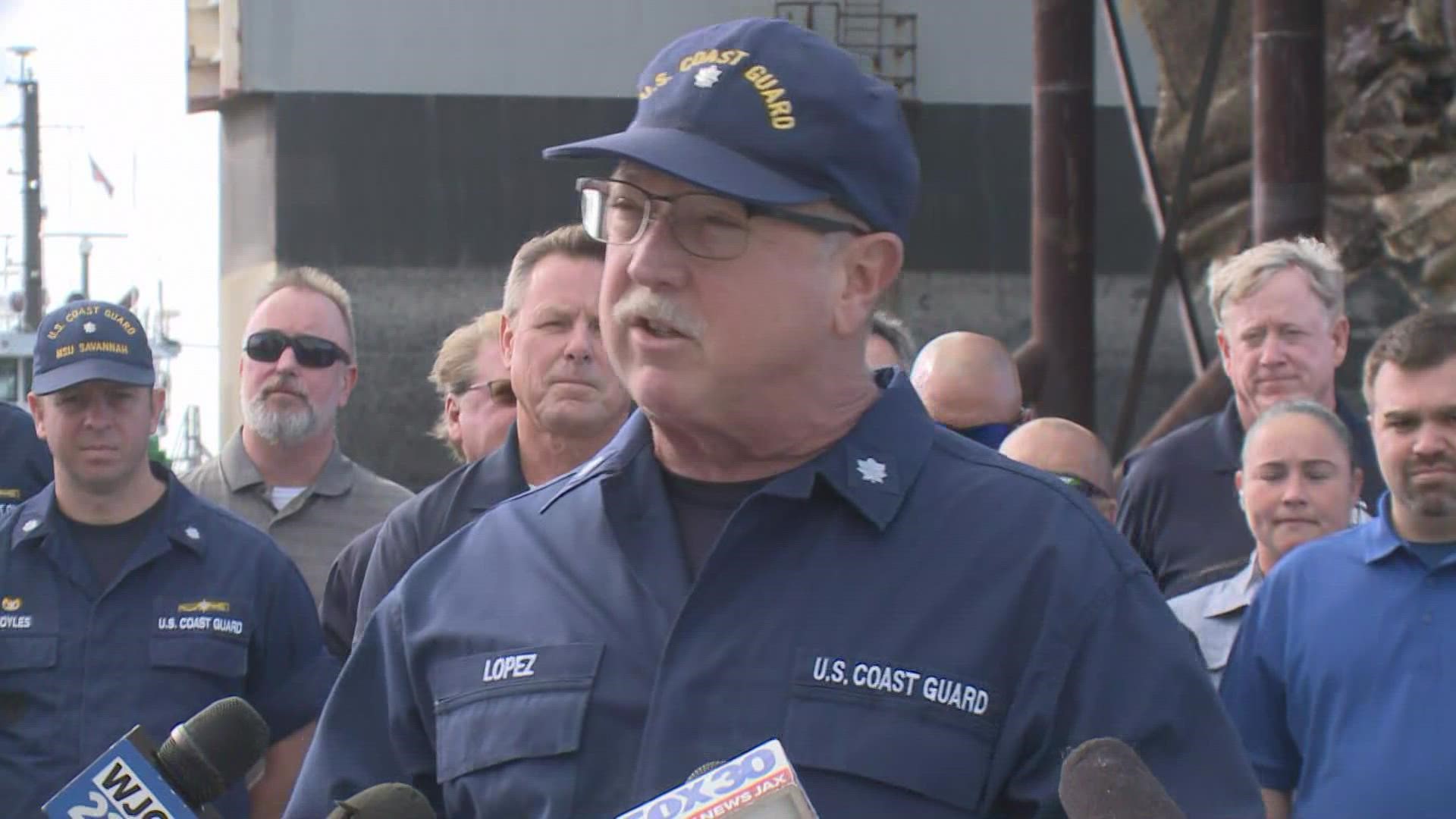ST. SIMONS ISLAND, Ga. — The last piece of the ship that capsized in the St. Simons Sound more than two years ago was officially removed Monday, according to The Unified Command for the St. Simons Sound Incident Response, which hosted a press conference with other agencies Tuesday.
This is the largest wreck removal in U.S. history, but there's still work to do. Two mid-body sections of the Golden Ray cargo ship must be broken down and underwater debris must still be cleared from the St. Simons Sound.
Section Four of the cargo ship still has some vehicles trapped inside it high in the air. Around it are piles of old vehicles and debris.
First Coast News asked Tod Farrar with Gallagher Marine Systems, the responsible party representative, and John Maddox with the Georgia Division of Natural Resources Environmental Protection Division how much of the bottom of the St. Simons Sound still looks like the pile. Their answer was that there's a lot left to do.
The environmental protection barrier that was used to try to mitigate environmental impacts is said to be the first of its kind, one mile long and enclosing 30 acres. The officials say it worked as well as they'd expected.
There were multiple oil spills over the more than two years that the cargo ship was taken apart. Representatives with Georgia Division of Natural Resources say there are no long-term impacts to water or air quality.
First Coast News told the representatives about one of their last times covering an oil spill when reporters went along the beach showing viewers the dark, sticky globs that were still there days later, asking about that impact.
"You can see it in the water, you can see it on the beaches, but what we haven't seen is repeatable data that shows that's long-term problem that has to be further mitigated beyond what we're already doing now," said Maddox.
Tyler Jones, public information officer for the coastal resources division of the Georgia DNR, says they will scan each segment of the 200 miles of response-monitored shorelines for new debris or oil impacts and have crews respond when treatment is required. He says the process will continue until they are satisfied no further treatment or mitigation is required.
Jones says their data collection from six sites in the St. Simons Sound "has not observed any oiled shrimp, blue crab, or fin fish. Our shell fish and water quality unit has not detected impacts from the incident."
First Coast News received a picture of an oiled crab earlier this year and asked Jones about it and their data collection. He describes the data collection process in the video Tweeted below, ending with, "Although the public may have reported it, we've gone out looking for it to try to recreate that on multiple, multiple occasions and have not observed that at all."
Chris Graff with Gallagher Marine Systems says by boat and walking, workers have covered more than 5,000 miles looking for environmental impacts. They have retrieved 8,000 pounds of ship-related debris and 9,500 pounds of other trash.
U.S. Coast Guard Federal On-scene Coordinator Commander Efren Lopez says there is a claims process where fishermen and residents can file a claim for damage with oil spills or debris.
As for how much this is all costing, Lopez says they don't have a number. It’s paid for by the company and their insurance. Lopez says an oil liability trust fund is also playing a role.
Up until now, Section Four was the only remaining section of the cargo ship that wrecked shortly after departing the Port of Brunswick in 2019. Before it can be removed, crews worked last week to help shed weight before it's secured into the cradle system to be loaded into a barge.
Barge Julie B departed the Port of Brunswick loaded with two sections of the Golden Ray wreck last week, according to The St. Simons Sound Incident Response. Those sections will be processed at a recycling facility in Louisiana.
During the removal, the weight-shedding team also removed vehicles from the final section of the Golden Ray.
Lopez says when the ship wrecked 23 crew members were rescued and four were stuck in the engine compartment. He says COVID-19 slowed the process of getting the Golden Ray out of the water.

